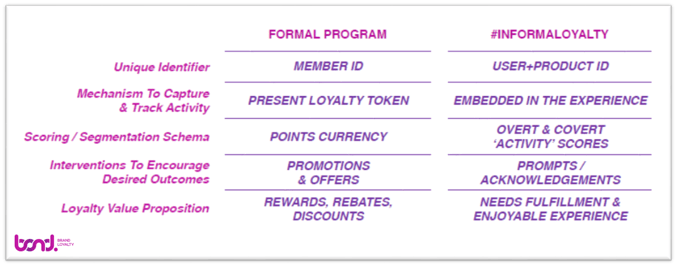Bond
Who Knew Tesla had a Loyalty Program?
A few months ago when I purchased my Tesla Model S, I had no idea that Tesla had a loyalty program. Perhaps I was distracted and mesmerized by the brilliance of the technology housed in this vehicle. Maybe my attention was diverted as I was infatuated by the gorgeous design of the car. Or was I overwhelmed with joy at the prospect of never again having to fill my car up with fuel? As a loyalty practitioner, how could I have missed this, as loyalty is part of my very DNA?
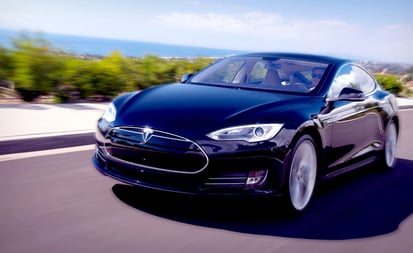
As I continued to engage with the brand, it became evident that Tesla has a very clever and covert loyalty program. In fact, every Tesla owner is a member of the Tesla loyalty program, yet nobody has ever heard of the Tesla loyalty program. So how can a brand’s loyalty program exist if their customers have never heard of it, don’t recall enrolling in it or participating in it?
Welcome to the newest emerging loyalty concept called “informal loyalty.” While Tesla may be an innovator and best-in-class in the premium electric car category, they are not the first to lean on this principle. Many other brands like Apple, Nest and Nike+ are actively partaking in the newest frontier of loyalty: informal loyalty. Informal approaches to loyalty may not bear the loyalty program moniker, yet they have cleverly and deliberately borrowed some of the familiar design elements of formal loyalty program designs.
Let’s examine the differences between formal loyalty programs and informal loyalty and better understand how Tesla has been able to partake and prosper:
- Identification—Formal loyalty programs uniquely identify customers with a unique member ID. Usually a member number, phone number, or email address is used as a unique identifier captured at enrollment with consent of the customer. Informal loyalty has a user and product ID that are connected together to link the product to the customer so that the brand knows who the customer is and what product(s) they are using. This is automatically linked with 100% of customer purchases of the brand’s product. 100% of Tesla customers have their name, phone number and address (among other personally identifiable information) directly linked to their Vehicle Identification Number (VIN). Unlike most formal loyalty programs which enroll less than 100% of their customers in their programs, Tesla automatically enrolls 100% of their customers and can identify and link them to the product(s) they purchase from Tesla.
- Data Capture and Tracking—Most formal loyalty programs offer members some sort of token to capture and track activity. This is usually in the form of a loyalty card, key chain card, phone number, email number or even a mobile bar code. With informal loyalty, the mechanism to capture and track customer activity is embedded in the experience with the brand’s product. When Tesla sells or leases a vehicle, that vehicle is simply a remote computer which is directly tied to the Tesla host back in California, 24/7/365. Tesla knows exactly where the vehicle is at all times using GPS tracking, how it is being used (driving, reversing, parked or charging), who is using it based on user-generated identification for seat and steering wheel preferences, how fast it is going, what functions are being used in the vehicle (air conditioning or heat, what songs are being played and for how long, etc.) and the list goes on and on. Tesla tracks every movement and activity of their customers’ vehicles. Imagine the possibilities for cross promotions with other brands! I am certain Elon Musk, Tesla’s brilliant CEO, has already thought about many monetization opportunities. Tesla justifies this tracking system as a security feature so that the car cannot be stolen, since it is traceable anywhere on Earth. Additionally, Tesla needs to scrutinize the vehicle’s functionality as it upgrades and repairs many vehicle features remotely like a software update on a computer.
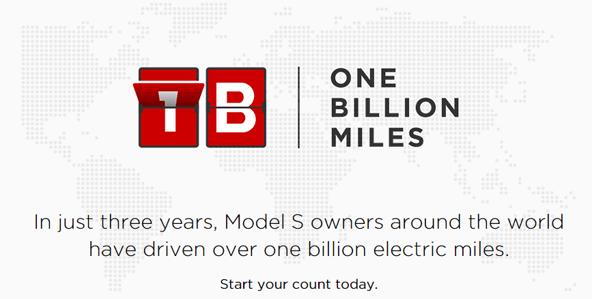
- Scoring and Segmentation Schema—Formal loyalty programs have scoring and segmentation schemas usually involving currency-like points which afford members the opportunity to redeem for both hard and soft benefits. Well, sure enough, informal loyalty programs also have a scoring mechanism; however these are overt and covert activity scores. Tesla has four types of Model S vehicles and can offer different benefits to customers with different model versions. For example, they have just offered a new “Ludicrous” speed option which allows a driver to achieve a speed of 0-60 miles in 2.8 seconds (as if the vehicle was not fast enough already). This new feature now makes Tesla one of the fastest cars on the planet. The S60, 70 and P85 versions of the vehicle cannot be upgraded to this speed, unlike the P85D version that can be upgraded for $5,000 to a P90D version. So customers can be segmented by the types of models and features. Moreover, in the future, Tesla can reward customers based on the number of miles they drive their electric car, as Tesla has a full line of sight of every mile traveled in any Tesla, and can deliver acknowledgements and rewards in real time right on the vehicles’ 17-inch touch screen dash, given the real-time connectivity of the vehicle with Tesla.
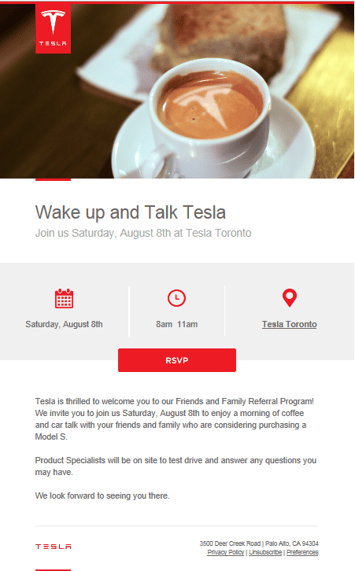
- Interventions to Encourage Desired Outcomes—Formal loyalty programs have various interventions to encourage desired customer outcomes. These usually manifest as promotions and offers. Informal loyalty programs also have prompts and acknowledgements which act as interventions to encourage desired outcomes. I recently received an email from Tesla’s CEO, Elon Musk, who informed me and other Tesla owners of the following benefits: “Those who order a new Model S before October 31st using the referral link of a current owner will get $1,000 off the purchase price. In return, the current owner will get a $1,000 discount that can be applied to a new car, service center visit or accessory. Referral discounts are limited to ten and are awarded on a first-to-purchase basis. New orders must be placed prior to October 31, 2015. In addition, those who make five referrals will receive a free Tesla Powerwall (including installation), as well as an invitation for them and a guest to attend the Gigafactory grand opening party. Those who make ten referrals will get the right to purchase a fully loaded Founder Series Model X, which is not available to the public, for the price of a base-level Model X—roughly a $25,000 saving. The first person to make ten referrals will get a fully loaded Model X for free.” So you can see that informal loyalty programs have the ability to offer very captivating interventions to encourage desired outcomes. In this case, a very strong referral program.
- Loyalty Value Proposition—We all know the power of a formal loyalty program’s value proposition, usually in the form of rewards, rebates and discounts. Informal loyalty’s value proposition typically is centered on needs fulfillment and an enjoyable experience. Tesla does this as well as any other practitioner of informal loyalty. In fact, I would argue that they probably do it better, since this is not common in the auto industry. When one purchases or leases a new vehicle from any car dealership, the features you purchase in your car stay with you for the duration of your vehicle ownership. Not so with Tesla. Tesla is always adding new and mostly free features to the vehicle almost monthly. The car is one giant computer linked to Tesla’s head office computer network. It is not uncommon for me to get a notification on my 17-inch touch flat screen that I will be receiving a software upgrade overnight. One early morning I came home to see my vehicle running with the music and lights on in the vehicle, as though the car were possessed. I immediately called the Tesla hotline, fearful that my vehicle was acting up…only to be told by the friendly Tesla technical advisor that my vehicle was receiving a major upgrade. The next morning when I returned to my vehicle, I had five new features downloaded to my vehicle that I did not have just hours before. This car just gets better and better every month! Tesla is constantly innovating and making sure that as an owner, I am the beneficiary of this innovation. They are not saving that innovation for the next proposed model. The vehicle never gets outdated. A completely novel idea and experience that perhaps other automakers should take note of. Talk about a surprise and a delightful benefit! I am always so excited the night before I get prompted that Telsa will be downloading new features to my car that I can hardly sleep. The anticipation is riveting and creates an even stronger emotional connection with the brand. I have no qualms about sharing my vehicle and location data with Tesla as the benefits of doing so far outweigh any concerns, and Tesla demonstrates that they use this privilege to my benefit.
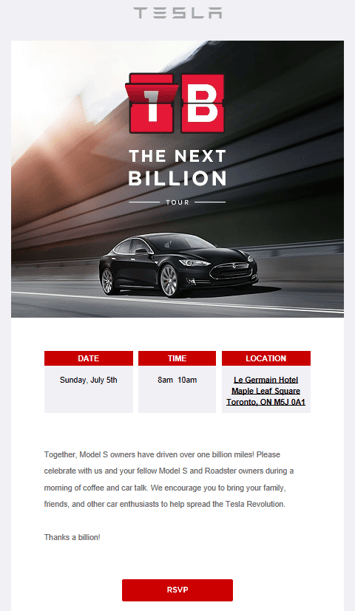
Tesla also practices the loyalty principles of member bonding and creating betterment. They promote the bonding between members and the creation of a better world. A month ago I received an email from Tesla informing me that my fellow Tesla drivers and I together have driven over one billion miles! In fact, together, all Tesla drivers collectively took the equivalent of 4,186 trips to the moon, prevented 570K tons of CO2 emissions, and traveled 2,000 years of highway. I had no idea that I had contributed to these impressive and eco-saving facts until Tesla told me. I felt like I made a difference, even though I was a small part, but it felt very club-like. In celebration of this milestone, Tesla owners in major cities were invited to a local high-end hotel for morning coffee and car talk with fellow Tesla owners and Tesla officials.
So one can see that informal loyalty not as pronounced as formal loyalty, shares many of the same mechanics as its predecessor, and can be equally as effective if not more so. I suspect that leading business visionaries and change agents like Elon Musk and the late Steve Jobs (Apple being a significant player in informal loyalty space) clearly understand the benefits of informal loyalty as a lever to build brand loyalty. While formal loyalty programs are not expected to be replaced completely by informal loyalty any time soon, brands should be assessing how they can harness informal loyalty mechanics to build everlasting brand loyalty.
